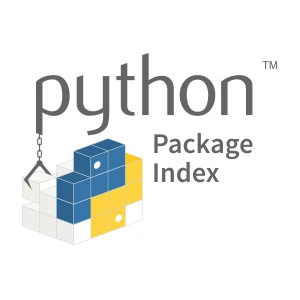A new company, Early Intervention Tools, has developed a screening method to identify early literacy problems in children, including dyslexia. The method, called Alpaca, uses AI to assess children's reading abilities in just 20 minutes, providing instant insights and recommendations for intervention. This approach aims to address the current "wait to fail" model, where children often struggle for years before receiving a diagnosis. The company's goal is to screen one million children worldwide each year by 2028, providing earlier support and hope for families and teachers.
Read full article
July 24, 2025 • By Livemint
Amazon has accelerated its artificial intelligence (AI) plans, hiring nearly 11,300 foreign workers in Q1 2025 for related roles. These positions offer salaries ranging from ₹1.59-2.27 crore annually, excluding benefits and stock options. The company is outpacing Meta, Google, and Microsoft in AI job postings, with salaries varying by role, including $185,000-$263,700 for software engineers and $204,028-$230,900 for data scientists. An Amazon spokesperson stated that pay is based on role, location, performance, and other factors, and is regularly reviewed to ensure competitiveness.
.png)
July 24, 2025 • By Adrien Payong
The article discusses Retrieval-Augmented Generation (RAG), an AI architecture that combines information retrieval with generative large language models. RAG pipelines consist of components that interact to turn raw data into accurate and contextually relevant answers. The article compares two popular frameworks, Haystack and LangChain, and discusses the importance of choosing the right vector database, embeddings, and chunking strategy for optimal performance. It also covers advanced techniques for optimizing RAG pipelines, evaluation metrics, and deployment strategies for production-ready systems. The goal is to provide a practical guide for building and deploying RAG pipelines, highlighting best practices and key considerations for achieving scalable, secure, and reliable solutions.

July 24, 2025 • By ET Online
A Bengaluru web developer's inspiring story has gone viral on the internet. He overcame a childhood of poverty and his parents' sacrifices to achieve a remarkable career transformation, from earning Rs 5,000 per month to securing a Rs 46 lakh annual package. His success is attributed to family support, hard work, and determination, resonating with the Reddit community.

July 24, 2025 • By Help Net Security
Here is a concise summary of the news article: According to Contrast Security, application-layer attacks have become a common method for adversaries to compromise organizations. These attacks target custom code, APIs, and logic, often evading detection tools like EDR and WAFs. The average application is targeted over 14,000 times a month, with hackers exploiting new flaws in just 5 days, while it takes 84 days to patch serious vulnerabilities. AI-generated code and third-party libraries are increasing the problem, with apps containing an average of 30 serious vulnerabilities and facing 81 confirmed attacks monthly. To manage these risks, security teams are adopting runtime protection models and shared telemetry across teams to detect and stop attacks from within running applications.

July 24, 2025 • By Shain Singh, principal security architect and innovation ambassador
Here is a concise summary of the news article: Organizations deploying AI applications face unique security and delivery challenges due to non-deterministic responses and multi-source data integration. Traditional security tools struggle with AI's variability, creating new attack vectors. F5's AI Gateway addresses these challenges by providing specialized protection, acceleration, and observability for AI applications. It monitors AI traffic, detects and blocks attacks, and identifies and scrubs personally identifiable information from AI-generated content. The solution integrates with F5's NGINX and BIG-IP platforms, extending proven application delivery capabilities to AI workloads. It also offers resource management, semantic caching, and observability to optimize AI operations and reduce costs. With the AI Gateway, organizations can maintain consistent performance, control costs, and ensure compliance with regulatory requirements.

July 24, 2025 • By Cade Metz
Meta has unveiled a wristband that uses AI to interpret muscle signals, allowing users to control devices with subtle movements or even intent. The wristband, which resembles a giant rectangular wristwatch, uses electromyography (EMG) to gather electrical signals from muscles in the forearm, and can be used to control computers, smartphones, and other devices without touching them. With practice, users can even control the device with just their thoughts, as the wristband can pick up on their intention to make a movement. The technology has the potential to provide life-changing benefits for users with physical disabilities, and Meta plans to fold it into products over the next few years.

July 24, 2025 • By Simon Sharwood
Amazon Web Services (AWS) has closed its AI lab in Shanghai, China, as part of a global effort to review and prioritize resources. The lab, which was established in 2018, focused on deep learning research and development. Around a dozen employees were impacted by the closure. This move is seen as part of a broader trend of foreign tech companies reassessing their presence in China, with Microsoft and IBM also having reduced their research and development staff in the country. However, Nvidia has taken a different approach, investing heavily in Chinese AI research. AWS's presence in China is limited, with only two cloud regions, and the company has also closed its app store and e-book store in the country.

July 24, 2025
A Model Context Protocol (MCP) server has been developed, featuring a knowledge graph-based memory system with AI-powered entity and relation extraction. This system utilizes structured ontologies to extract meaningful relationships from unstructured text, differing from other memory systems that rely on basic summarization or unstructured storage. The MCP server offers four tools: extracting knowledge, retrieving context, saving the knowledge graph, and providing statistics. It supports custom ontologies and local storage, making it ideal for developers seeking predictable, domain-specific memory extraction. The system is backed by MIT and provides a scientific ontology demonstration, showcasing its capabilities in complex domains.

July 24, 2025 • By Duncan Riley
Amazon has announced the winners of its inaugural Nova AI Challenge, a global competition where university teams tested the security of artificial intelligence coding assistants. The winning teams, Team PurpCorn-PLAN from the University of Illinois and Team PurCL from Purdue University, demonstrated innovative approaches to securing AI coding models. The challenge aimed to address the critical question of building AI coding assistants that are both helpful and secure. Each team received $250,000 in sponsorship, with the winners gaining an additional $250,000 and the runners-up receiving $100,000. The competition highlighted the importance of adversarial testing in building secure and trustworthy AI systems.

July 24, 2025 • By Ghazal Ahmed
Here is a concise summary of the news article: Scotiabank analyst Nat Schindler raised Amazon's price target to $275 from $250, maintaining a "Sector Outperform" rating. Despite mixed investor sentiment ahead of Q2 results, Amazon is expected to have the weakest sentiment among hyperscalers. Amazon Prime Day achieved record sales, surpassing previous four-day events. However, Scotiabank notes potential margin pressure for Amazon Web Services (AWS) due to capacity constraints and concerns about AWS' AI development, trailing behind Google. The article suggests considering other AI stocks with greater upside potential and less downside risk.

July 24, 2025 • By taylor@taylorwilsdon.com
A developer has created a comprehensive Google Workspace MCP server that integrates various Google services, including Calendar, Gmail, and Drive, with AI assistants. The server features advanced authentication handling, service caching, and streamlined development patterns. It can be installed with a single click using the Claude installation method and supports multiple transport modes. The server also includes automatic authentication and service caching, making it a production-ready solution for developers and users. The project is open-source and available on PyPI, with a MIT License.

July 24, 2025 • By Chris Hauk
Apple has released Safari Technology Preview 224, a developer preview browser with new features and updates. The latest version includes fixes for Accessibility, CSS, and Web API, among others. It's compatible with macOS Sequoia and macOS Tahoe, and is available for download or update through System Settings.

July 23, 2025 • By Muhammad Faisal
The article discusses the importance of user experience (UX) design in the digital world, with North America accounting for over 40% of the global UX market in 2024, totaling $22.7 billion. It highlights the need for innovative UI/UX design to stay ahead of the competition. The article then lists 10 of the best design teams in the USA, including: 1. Arounda Agency - a trusted digital design and development partner with 9+ years of experience. 2. Usman Group - a small UX/UI and digital strategy agency based in Denver and Chicago. 3. Propelland - a medium-sized UX/UI design and product design agency based in San Francisco. 4. Semaphore Mobile - a Texas-based UX/UI and mobile app development agency. 5. Digital Silk - a full-service digital agency located in New York and Miami. 6. One Design Company - a strategic design and development firm in Chicago. 7. Blueprint - a UX/UI and product design agency based in Washington, D.C. 8. Daito Design - a UX/UI agency in Austin, Texas. 9. Think Company - a UX/UI and development agency in Philadelphia. 10. Matic Digital - a UX/UI design and digital marketing studio with locations in Chicago and Los Angeles. Each agency is described in terms of their expertise, services, and approach to UI/UX design, highlighting their strengths and weaknesses. The article concludes by emphasizing the importance of strong UI/UX design in engaging customers and growing businesses, and encourages readers to select the best agency for their needs.

July 23, 2025 • By Maria Deutscher
Amazon Web Services (AWS) has closed its artificial intelligence lab in Shanghai, China. The lab, which opened in 2018, focused on natural language processing and AI development tooling. The closure is reportedly due to "strategic adjustments" amid US-China tensions. The lab played a key role in creating the Deep Graph Library, an open-source tool for training graph neural networks. The move comes as other companies, such as Microsoft and McKinsey, are also scaling back their AI work in China. AWS has recently laid off hundreds of employees, and the closure of the Shanghai lab may be related to these layoffs. The US government has also increased scrutiny of AI chip sales to China, which may have contributed to the lab's closure.

July 23, 2025 • By Dries
The article discusses the impact of AI on digital agencies and web development. As AI transforms the industry, agencies must evolve beyond technical work and focus on strategy, orchestration, and measurable outcomes. The author, Dries Buytaert, notes that AI is not just an upgrade in tools, but a fundamental shift that will change the nature of work in the industry. He emphasizes that human expertise will remain essential, particularly in areas such as strategy, direction, and accountability. Buytaert highlights several key changes that AI will bring to the industry, including: 1. **Content creation**: AI will generate content, such as blog posts and social media posts, changing the workflow and requiring human input for editing and strategy. 2. **Code generation**: AI will handle implementation tasks, allowing senior developers to focus on higher-level tasks and junior developers to take on more responsibilities. 3. **User interfaces**: AI will change the nature of UI work, making traditional interfaces less important and requiring designers to focus on natural language and predictive experiences. 4. **Billing and pricing**: AI will disrupt traditional billing models, requiring agencies to focus on outcomes and value rather than hours worked. To stay competitive, agencies must adapt and evolve. Buytaert suggests several strategies, including: 1. **Becoming AI-augmented**: Agencies should explore how AI can improve efficiency and create more space for strategic thinking. 2. **Focusing on outcomes**: Agencies should shift towards pricing based on value created rather than time spent. 3. **Selling through consultation**: Agencies should position themselves as trusted partners, helping clients understand their problems and shape solutions. 4. **Becoming the layer between AI and clients**: Agencies should build quality control systems and become the essential layer that connects AI capabilities with real client needs. 5. **Packaging repeatable solutions**: Agencies should turn internal knowledge into named, repeatable offerings to differentiate themselves and scale their business. 6. **Building systems that manage complex digital workflows**: Agencies should focus on orchestrating tools, data, and AI agents to solve business problems and drive automation. The article concludes by noting that the transition to an AI-powered industry will be challenging, but also creates opportunities for differentiation and growth. Agencies that adapt and evolve will be well-positioned to succeed in the new era of digital experience.

July 23, 2025 • By Lucas Waye
Here is a concise summary of the news article: Meta has developed a Privacy Aware Infrastructure (PAI) to streamline data flows while ensuring purpose limitation and transparency. PAI leverages automation to reduce the overhead associated with privacy requirements, allowing engineers to focus on building innovative products. A key component of PAI is Policy Zones, which controls how data flows in complex systems and remediates data flow at scale. Policy Zones uses Information Flow Control (IFC) principles to offer a durable and sustainable approach to data protection. The system has been integrated into Meta's batch processing systems, including its data warehouse, to protect users' messaging data. Policy Zones enforces purpose-use limitation by tracking and enforcing policies across complex relationships between datasets. The system uses a Unified Programming Model (UPM) to parse SQL queries and translate them into semantic trees, which capture the inputs, outputs, and transformations of each data movement step. Policy Zones has been successfully deployed in Meta's data warehouse, supporting various workloads such as batch analytics, real-time processing, and machine learning. The system has also been integrated into Meta's stream processing systems and AI training workflows. To simplify the explanation of Policy Zones errors, Meta has developed a debugger tool called Dr. PZ, which guides engineers to resolve issues and provides remediation guidance using generative AI. Overall, Policy Zones enables developers to quickly innovate in Meta's data warehouse while respecting various privacy requirements on the data they are using. The system has hit major milestones, but there are still opportunities ahead, including reducing friction through generative AI, closing the gap on opaque operators, and seamless hand-off to Policy Zones for function-based systems.